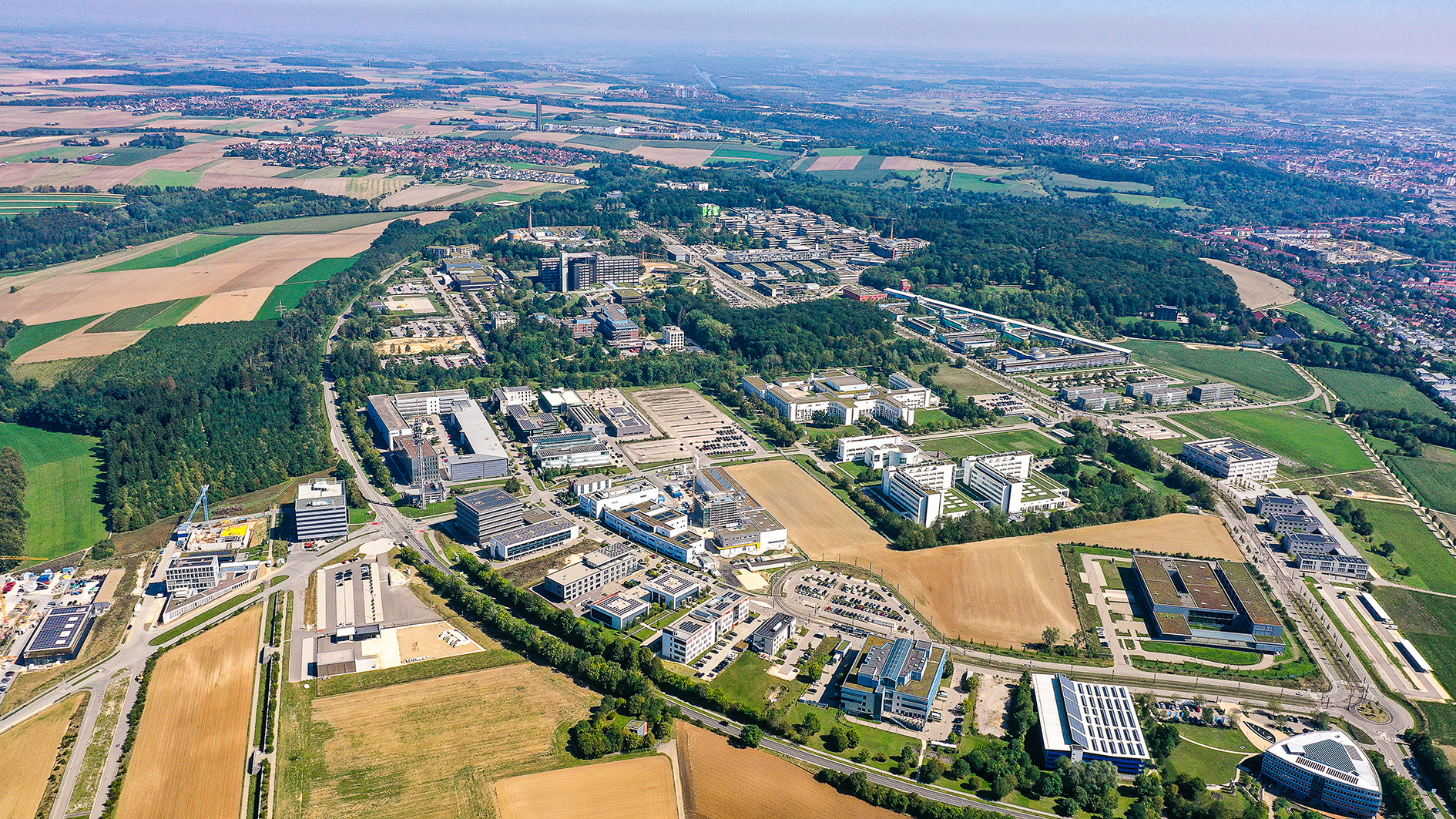It is a think tank and job engine, a powerhouse for technology and knowledge transfer: the Science City Ulm. It is home to universities and academies, three large clinics, eight non-university research institutions, 18 research associations and more than 60 companies. In addition, numerous startups are based there. From energy research and artificial intelligence to laser and quantum technology and medical technology, numerous future technologies are at home in the science city.
The Science City Ulm is a prime example of how much a region can benefit from a close exchange between science, business and politics. It was launched in the mid-1980s – a time of economic crisis characterised by massive job cuts in industrial manufacturing. Tens of thousands of jobs were lost, and the unemployment rate rose dramatically. What could be done? The exchange between science and industry had to be intensified in order to successfully manage the structural change. And so the idea of a “Science and Technology City” was born. The first impetus for founding the Science City Ulm came from the then university rector, Professor Theodor Fliedner, with a groundbreaking memorandum. Support came from industry, which wanted to set up its own research centres in the region – in close cooperation with science and the university. There was a lot of approval from politicians, first from the city and region, and finally and crucially, from the state, which implemented the project. It was seen as a unique way to strengthen the competitiveness of industry and the economy in the face of growing international challenges.
The founding of the Science City, which was developed in a then greenfield site about three kilometres from the city centre, was an experiment for society as a whole. At the time, only international role models existed, for example in Japan, Great Britain and the USA. Over time, the model project for intensifying cooperation between science and industry, between university and industrial research – between institutes, medium-sized companies and global players – has become a widely recognised beacon. With more than 60 companies and research institutions from industry that have been established and developed in the Science City, well over ten thousand jobs have been created since, a large proportion of them for highly qualified and highly trained specialists.
The heart of the Science City is Ulm University. It was founded in 1967 as a so-called reform university. The university, which originally started out as a medical and life sciences university, derived its interdisciplinary claim from the motto “all subjects under one roof”. This idea has remained a leitmotif of the Science City. Nevertheless, the focus was to be on engineering. The development of the Science City went hand in hand with the expansion of engineering subjects and computer science.
However, the model for success today was not without controversy when it was first developed. In particular, there were fears about the freedom of research and teaching in the university and intellectual milieus. Would the intensified cooperation between science and industry not lead to a loss of autonomy for the universities? But these concerns were quickly dispelled, and a partnership grew in equality and solidarity that continues to guarantee prosperity in Ulm and the surrounding area.
.
Photocredit: © Jürgen Burdack | JB-Technik










